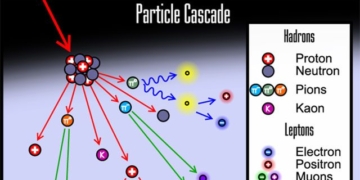Every few years, El Niño re-emerges in the Pacific, negatively impacting those who suffer from allergies. You may find yourself sneezing and sniffling more often. Why is that?
Allergic rhinitis affects over 400 million people worldwide, with numbers increasing by 10-30% each decade. The El Niño phenomenon and rising pollen levels — both often linked to climate change — are negatively impacting allergy sufferers.

Increased humidity can exacerbate allergy symptoms. (Illustrative image).
Recent research indicates that the pollen season now starts 20 days earlier, lasts over 10 days longer, and features 21% more pollen than in 1990.
When we experience El Niño, the Earth tends to be slightly warmer than average. This amplifies the effects of climate change by intensifying extreme weather events. All of this stems from high CO₂ levels in the atmosphere and erratic rainfall.
Warmer temperatures associated with El Niño affect plant behavior. Some plants produce pollen early in the spring, while others, like ragweed, extend their growing season into the fall. A longer and more intense pollen season can lead to severe physical symptoms.
El Niño disrupts atmospheric circulation patterns, resulting in rainfall in some areas and droughts in others. Increased rainfall can break pollen into smaller, more allergenic pieces. Higher humidity can exacerbate allergy symptoms.
Additionally, changes in temperature and rainfall patterns influence wind-borne pollen, which is crucial for plant fertilization. This can increase allergic reactions by making proteins in pollen more potent.
A study published in Nature last year predicted that pollen levels could increase by 200% by the end of this century if pollution continues to warm the planet.
According to the WHO, allergies could affect half of the population by 2050. Another study even refers to it as the invisible killer.




















































